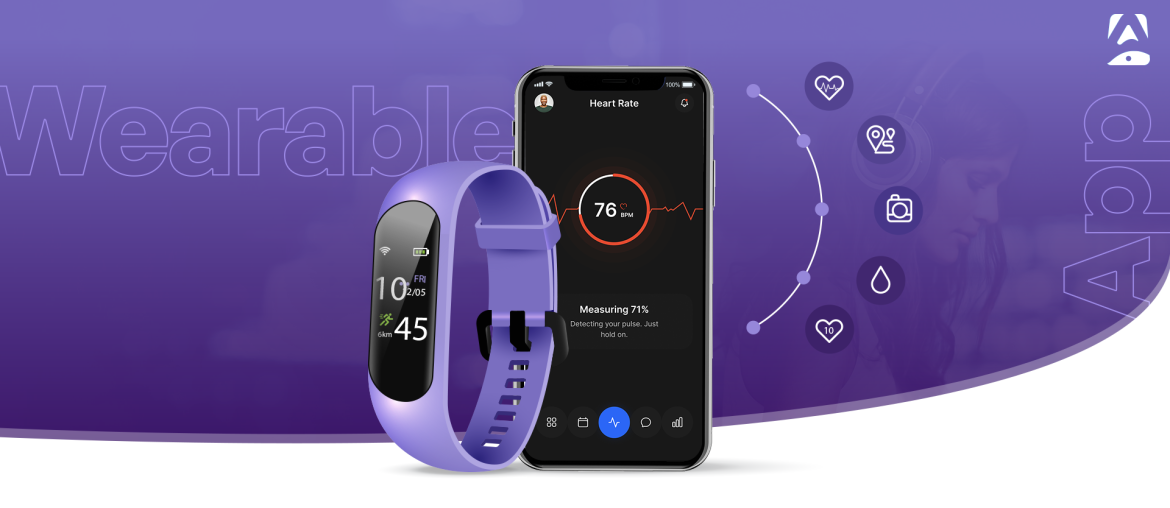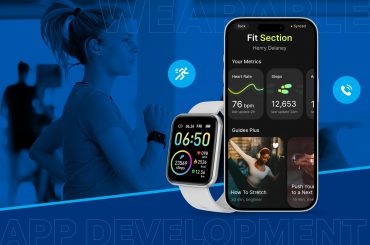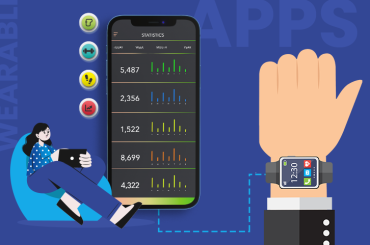In an age marked by the convergence of technology and daily life, wearables have transcended being mere gadgets; they are now integral parts of our routines. This shift has catalysed a surge in the demand for innovative and user-friendly wearable applications. In this comprehensive guide, we will delve deep into the intricacies of wearable app development, exploring the associated costs, indispensable features, and the systematic steps involved in creating cutting-edge applications for this dynamic market.
Understanding the Dynamics of Wearable App Development
Understanding the dynamics of wearable specifications for top mobile app development is paramount in navigating this dynamic landscape. From the intricacies of cost considerations to the essential features that elevate user experiences, this exploration delves deep into the multifaceted world of crafting applications for these intelligent and ubiquitous devices. Join us on this journey as we unravel the complexities and nuances that define the dynamics of wearable apps.
Costs Involved in Wearable App Features: A Holistic Overview
Embarking on the journey of wearable apps necessitates a comprehensive understanding of the financial landscape. The costs can vary significantly based on factors such as the chosen platform, app complexity, and the integration of specific features. Broadly categorized, the costs include:
- Development Team Expenses: Covering salaries for developers, designers, and testers.
- Hardware Costs: If the app necessitates integration with specific hardware, these costs must be factored in.
- Software and Licensing: Encompassing expenses related to development tools, software licenses, and third-party integrations.
- Maintenance and Updates: Ongoing expenses for ensuring the app stays relevant, incorporating updates, bug fixes, and enhancements for compatibility with evolving technologies.
Understanding these cost factors is vital for setting realistic budgets and expectations from the outset of the development process.
In the dynamic landscape of wearable mobile app development services, success hinges on a meticulous focus on user experience and functionality. The following features are indispensable considerations when aiming to create a compelling and user-centric wearable application:
1.Seamless Connectivity
To create a truly immersive user experience, it’s imperative that the app seamlessly connects with the wearable device, offering real-time data access. Developers should prioritise optimising data transfer protocols, minimising latency, and ensuring swift information exchange. This not only enhances the functionality of the app but also contributes to a smoother and more engaging user experience.
2. User Interface (UI)
Tailoring the user interface for smaller screens is paramount in ensuring user accessibility and satisfaction. Designers should focus on crafting an intuitive and easy-to-navigate interface, acknowledging the limited real estate available on wearable devices. Prioritizing simplicity and clarity in UI design not only facilitates ease of use but also contributes to an aesthetically pleasing and visually cohesive user experience.
3. Health and Fitness Tracking
Given the increasing emphasis on health and wellness, leveraging built-in sensors for comprehensive health and fitness tracking is essential. Incorporating features such as step tracking, heart rate monitoring, and sleep pattern analysis caters to the growing demand for health-centric wearables. This not only aligns with user expectations but also positions the app as a valuable tool for promoting a healthy and active lifestyle.
4. Notifications
Keeping users informed is key to user engagement. Enabling push notifications ensures that users receive timely updates on important events or information. To enhance user control and personalisation, developers should implement customisation options, allowing users to manage and prioritise notifications based on their preferences. This approach not only fosters user engagement but also respects individual user preferences, contributing to an enhanced overall experience.
5. Compatibility
Ensuring broad compatibility is vital for maximizing the reach of the wearable app. Developers should consider creating versions tailored for popular wearable platforms, such as smartwatches, fitness trackers, and augmented reality glasses. This strategic approach allows the app to cater to a diverse user base, ensuring seamless integration into the varied wearable ecosystem and expanding its potential user reach.
Steps in Wearable iOS and Android App Development: A Systematic Approach
- Define Objectives and Target Audience: Clearly articulate the purpose of the app and identify the target user demographic.
- Understand the specific needs: and expectations of the target audience to tailor the app accordingly.
- Choose a Platform: Decide whether the app will be developed for smartwatches, fitness trackers, or other wearable categories. Select the platform based on the identified target audience and the features you plan to incorporate.
- Design the User Interface: Collaborate with UI/UX designers to create an intuitive and user-friendly interface suitable for smaller screens. Prioritise simplicity, easy navigation, and aesthetic appeal to enhance the overall user experience.
- Develop the App: Choose a development framework based on the chosen platform (iOS, Android, etc.). Integrate essential features and functionalities, ensuring compatibility with the selected wearable devices.
- Testing: Conduct rigorous testing across various scenarios to identify and resolve any bugs or issues. Test the app on different wearable devices to ensure universal compatibility and optimal performance.
- Deployment: Publish the app on the respective app stores or distribution channels. Implement effective marketing strategies to increase visibility and encourage downloads.
- Maintenance and Updates: Establish a plan for regular updates to address bugs, enhance security, and introduce new features. Actively gather user feedback to make informed decisions about future updates, ensuring the app stays aligned with evolving user needs.
Conclusion
Wearable app functioning is a dynamic and multifaceted endeavor that requires a blend of technical prowess, user-centric design, and strategic planning. By comprehending the associated costs, incorporating essential features, and following a systematic development process, developers can create engaging, functional, and future-ready applications that seamlessly integrate into the ever-evolving landscape of wearables. In a world where technology and daily life are increasingly intertwined, staying informed about the latest trends and innovations in wearable features of cross-platform mobile app development is not just a choice; it is a necessity for those aiming to create impactful and successful applications in this rapidly expanding market.
FAQs
1. Why is seamless connectivity considered an essential feature in wearable app development?
Seamless connectivity ensures a smooth user experience by enabling real-time data access between the app and the wearable device. This feature optimizes data transfer protocols, minimizing latency and contributing to an immersive and responsive user interface.
2.How does the user interface (UI) design impact the success of a wearable app?
The UI design is critical for user accessibility on smaller screens. Crafting an intuitive and easy-to-navigate interface tailored for wearables enhances user satisfaction. Prioritising simplicity and clarity in UI design not only facilitates ease of use but also contributes to an aesthetically pleasing and visually cohesive user experience.
3.Why is health and fitness tracking considering a fundamental feature in wearable applications?
Leveraging built-in sensors for health and fitness tracking responds to the growing demand for health-centric wearables. Features like step tracking, heart rate monitoring, and sleep pattern analysis not only align with user expectations but also position the app as a valuable tool for promoting a healthy lifestyle.
4.How do customisable notifications contribute to a positive user experience in wearable apps?
Customisable notifications empower users to manage and prioritise updates based on their preferences. Enabling push notifications keeps users informed of important events, enhancing user engagement. This feature respects individual preferences, contributing to an overall positive and user-centric experience.
5.Why is compatibility crucial, and how can developers ensure broad compatibility in wearable apps?
Compatibility ensures the app reaches a wider audience. Creating versions tailored for popular wearable platforms, such as smartwatches and fitness trackers, allows developers to seamlessly integrate their apps into the diverse wearable ecosystem. This strategic approach expands the potential user reach and enhances the overall success of the wearable application.



